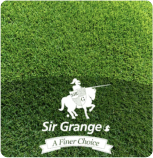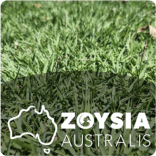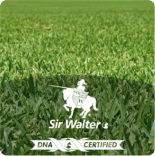Summer weeds can be just as painful for lawn lovers as winter weeds. Here are 5 common Summer weeds that are tormenting lawns across the region right now. You can get some quick tips on how to identify these Summer weeds as well as how to control or eradicate them.
#1: Clover

While the Irish will tell you the four-leafed clover is the ultimate lucky charm, a modern lawn lover may not feel the same. Clover thrives in a poorly fertilised lawn, so a clover infestation is often a sign you need to feed your lawn more often.
How to identify clover: Clover shaped, green leaves with circular markings, on thin stems. Small white flowers, ball-shaped on stems with leaves
How to control clover: Hand remove or use a selective herbicide suitable for your grass variety.
Learn more about Selective Herbicides: Selective Vs. Non-Selective Herbicides
#2: Bindii (Bindy eye / jo-jo)

Bindii is the Summer weed you will feel often before you see. The bane of the existence of bare feet everywhere. Dry conditions and mowing too close can create the perfect conditions for bindii to thrive.
How to identify bindii: Finely dissected, small, fern-like leaves, light green in colour. Small brown, flat seeds with sharp spines that hurt bare feet.
How to control bindii: Hand removal or selective Bindii herbicides suitable for your grass variety in Winter or early Autumn before the plant sets seed.
#3: Creeping oxalis weed

Creeping oxalis is often mistaken for clover, though its leaves are smaller and typically lighter. Creeping oxalis weed uses exploding seed heads to spread seeds 3 metres or more allowing it to spread rapidly.
How to identify creeping oxalis: Light lime green, heart-shaped trifoliate leaves around 4mm long. Bright yellow flowers with five petals appear in the spring.
How to control creeping oxalis: Use a selective herbicide suitable for your grass variety.
#4: Crowsfoot grass

Crowsfoot is a prolific seeder and spreader, which will take over lawns if not controlled. It thrives in low nutrient and compacted soil conditions so regular fertilising and aeration can prevent it ever taking root.
How to identify crowsfoot grass: A tough, dark green annual Summer grass with flattened stems and shiny strap-like leaves. Tufted grass with spreading or semi-upright stems that can be up to 60 cm high. Seedhead has two to ten spikelets on a long stem.
How to control crowsfoot grass: Hand remove juvenile weeds or use a selective herbicide suitable for your grass variety.
#5: Nutgrass

Nutgrass is a tall grass-like plant from the sedge family that thrives in wet weather. It uses a network of underground stems from small tubers (sedges) to spread and respawn. Tricky to eradicate, nutgrass can stay dormant in the ground for 70 years.
How to identify nutgrass: Resembling grass blades this weed can be hard to spot. Triangular shaped thick stems, topped with three leaves. Reddish-brown or purplish-brown flower spikelets.
How to control nutgrass: Do not hand remove nutgrass, the sedge will only spawn more nutgrass. Nutgrass can only be controlled with a specific herbicide such as Sedgehammer.
How to Control & Kill Nutgrass Naturally & Easily – Ultimate Nutgrass Killer Guide
Most weeds thrive in unhealthy lawns. Prevention is the best cure, so maintaining a healthy lawn can mean these weeds never become an issue for your lawn.
Herbicide warning: Always ensure you only use a selective herbicide suitable for your grass variety. The wrong herbicides will also kill healthy lawns. Also always follow the instructions of your herbicide.
For more information on weeds, check out our handy Weed Identification Guide: Weed Identification Guide
To get some more advice on Summer weeds call our team on (07) 3114 8281. You can also pop in and order in person at our sales office on 1/243 Bradman Street, Acacia Ridge. The office opens Monday to Friday 7am to 5pm and Saturday 7am to 12pm.
For more great lawn care tips keep an eye on our website and all our social media channels.













